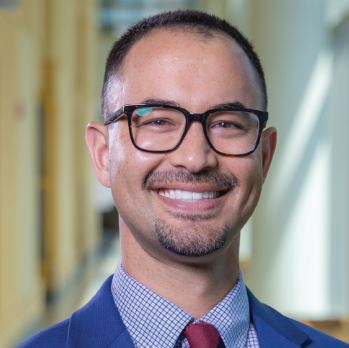Pioneering Study Reveals Injury-Spared Spinal Cord Tissue Bridges as Powerful Predictors of Recovery in Cervical Spinal Cord Injury
Multicentric study findings featuring potential to change clinical practice and inform interventional spinal cord injury trials
PM&R News Jun 28, 2024
FOR RELEASE ON JUNE 27, 2024
Contact:
Andrew C. Smith, PT, DPT, PhD
Associate Professor
Department of Physical Medicine and Rehabilitation, University of Colorado Anschutz Medical Campus
[email protected]
Pioneering Study Reveals Injury-Spared Spinal Cord Tissue Bridges as Powerful Predictors of Recovery in Cervical Spinal Cord Injury
Multicentric study findings featuring potential to change clinical practice and inform interventional spinal cord injury trials
Prognostication of recovery after spinal cord injury (SCI) is lacking accuracy despite its importance for people being directly affected and their environment. Researchers from three international rehabilitation centers in Zurich (CH), Murnau (GE) and Denver (CO, US) have now highlighted the crucial value of neuroimaging measures derived from clinical magnetic resonance imaging (MRI) scans for prediction of sensory and motor recovery in people with tetraplegia (upper and lower body dysfunctions due to an injury to the cervical spinal cord). These neuroimaging measures encompass the extent of injury-spared neural tissue adjacent to the spinal cord lesion and hold the scientific term ‘spinal tissue bridges’.
The findings of the longitudinal study titled ‘Prognostic value of tissue bridges in cervical spinal cord injury: a longitudinal, multicenter, retrospective cohort study’ that are described in this article have the potential to change clinical practice and were just published in The Lancet Neurology which is the world-leading Clinical Neurology journal. The team, including CU Anschutz faculty Dr. Andrew Smith and Craig Hospital researchers Drs. Tefertiller, Berliner, and Draganich, first author Dr. Dario Pfyffer and senior author Prof. Dr. Patrick Freund, and SCI Experts from all over the world, successfully established models incorporating spinal tissue bridges for improved prognostication of clinical outcomes in a large multicentric cohort of cervical SCI patients. These tissue bridges, measured on MRI images assessed early after SCI, added crucial value to prognostic models that include information of the patients’ clinical status at hospital admission which represented the gold standard so far. Dr. Pfyffer highlights the significance of revised clinical outcome prognostication: “Accurate outcome prediction is of utmost importance for patients, treating therapists, and attending doctors.”
“Accurate outcome prediction is of utmost importance for patients, treating therapists, and attending doctors.”
By investigating recovery at hospital discharge at around 3 months after the injury and at 12 months follow-up, this landmark imaging study provides compelling evidence that spinal tissue bridges are associated with short-term and long-term clinical improvement. Remarkably, tissue bridges have also been found to be more powerful and accurate predictors than baseline clinical measures for categorizing patients into subgroups with similar clinical outcomes across all three international centres. Stratification of a heterogeneous patient cohort into more homogeneous subgroups of distinct recovery profiles is of utmost importance when aiming to differentiate between spontaneous recovery and recovery due to an intervention in clinical trials.
Dr. Pfyffer asserts the importance that recovery prediction models need to be reproducible and generalizable to new patients which holds true for their innovative findings. Specifically, the study results were validated across individual SCI patient cohorts from the three centers despite their demographical and clinical differences. “Our models and findings can be translated to other patient cohorts and are valid across SCI centers, MRI scanners, and raters.” This lays the foundation for a successful application of tissue bridges for improved conduction of multicenter interventional trials.
“Our models and findings can be translated to other patient cohorts and are valid across SCI centers, MRI scanners, and raters.”
The relationships between neuroimaging-derived tissue bridges and both 3 months and 12 months outcomes highlight the broad clinical applicability of the study’s approach. Spared tissue bridges hold great promise for improved outcome prognostication accuracy after SCI as well as guiding and evaluating rehabilitation strategies in clinics. This revolutionary study demonstrates the incredible potential of tissue bridges to optimize clinical decision making, patient counselling, and SCI trial planning if routinely assessed as part of the clinical care standards. It brings us another step closer to the development of more specific rehabilitation programs and individualized treatment strategies for people living with SCI.
About the participating rehabilitation centers
Patients in this multinational study were either admitted to Balgrist University Hospital, Zurich, Switzerland, BG Trauma Center, Murnau, Germany, or Craig Hospital, Denver, CO, USA. These renowned trauma and rehabilitation clinics are dedicated to advancing medical research and improving patient outcomes through innovative studies and clinical applications. Our team of experts is committed to pioneering new approaches in the diagnosis, treatment, and rehabilitation of spinal cord injuries.
For more information, please contact:
Dario Pfyffer, PhD
Postdoctoral researcher
Balgrist University Hospital, University of Zurich and Stanford University School of Medicine
[email protected]
+1 (650)-723-0727